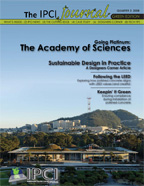Keeping it Green
Installing polished concrete on a LEED job
Polished concrete has been established in the flooring industry as a LEED friendly system. What is important to the polisher is keeping the installation ‘green’ throughout the project. Equipment, products, and even the process used may affect the environmental nature of the flooring. It is important to choose carefully to prevent getting kicked off of a Green project, or upsetting a customer who is very environmentally conscience.
The Grind Process:
The dry polishing method is preferable for LEED projects since the dust produced from the concrete is contained and disposed of in a continuous bagging system, allowing less than .2 microns to escape. Concrete dust contains an alkaline, and when wet grinding, this alkaline can easily be introduced into the watershed from the liquid slurry. The alkaline can raise the pH balance in waterways to a highly toxic pH11-13 range, posing a health risk.
Another potential health hazard may lurk in the coating removal. Mastic and adhesives can contain asbestos. When on a rehab project where asbestos is a concern, it is critical to contact certified asbestos removal professionals.
Equipment:
When choosing what equipment should be used, it all comes down to power. Studies have proven propane to be one of the cleanest burning, energy efficient fuels available, but the use of propane grinders on a LEED project is prohibited! This seems counter intuitive, but the VOC's emitted by the propane grinder (carbon monoxide) are listed as one of the indoor air quality contaminates in LEED-NC.
Products:
There is an entire LEED credit that can be achieved just by utilizing no and low VOC’s. Densifiers and sealers used during the installation process should follow the low VOC protocol according to the LEED-NC Reference Guide. Also, dyes are preferred over acid stains.
Maintenance:
After the installation of the polished concrete, a green maintenance program just makes sense. Green maintenance will include soaps and detergents that have little to no VOC's. The best choices are natural products that don’t contain toxins (such as ammonias, chlorines, butyls, phenols, and formaldehydes) but that are also safe for polished concrete floors.
Diamond polishing pads are a good choice to implement into a “green” maintenance program since they eliminate the need for many of the chemical products that would normally be required to sustain a high polish floor. Diamond polishing pads can often be implemented as a replacement to stripping and waxing floors on flooring types beyond just polished concrete, such as VCT, terrazzo, and other natural stones.
Why are VOC’s so problematic?
In the early 1970’s, in an effort to conserve energy, ‘closed-system’ building (ex: tight weather stripping at doors and windows) became increasingly popular. The abundance of recycled air and lack of circulation caused adverse affects on the indoor air quality and contributed greatly to ‘sick building syndrome’. ‘Sick buildings’ are classified as a building in which twenty or more people report being affected by similar ailments related to poor indoor air quality. Common complaints vary from irritation of the eyes, nose and throat to mental fatigue, headaches, nausea and dizziness.
If you are working on a LEED project and are unsure whether something you are using may adversely affect the project, ask questions before proceeding. Contacting your local USGBC Chapter, your manufacturer, or even IPCI may save you from a large headache later down the road (such as not getting paid!).

